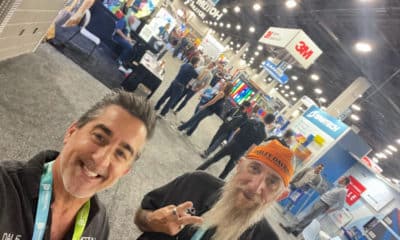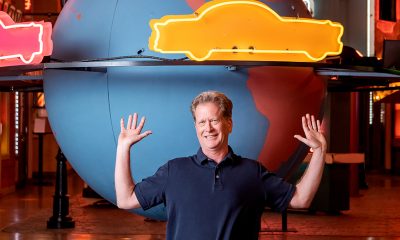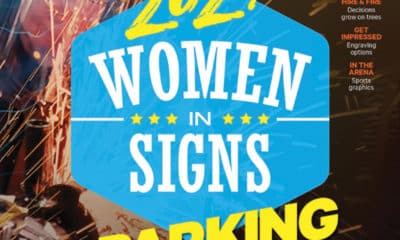Having acquired the Tulsa branch of Claude Neon Federal (CNF) in April 2003 and having merged their own sign company into it, owners Scott, Dan and Pat Sanford have modernized operations while having restored the splendor of many of Tulsa’s neon gems.
CNF’s historic reputation makes it a leader in maintaining weathered classics, such as the Atlas Life sign, which CNF built in 1946 and refurbished four years ago. CNF also restored the Meadow Gold, The Brook and Moody’s signs seen in the previous article. CNF is also the company of choice for creating new signs in the classic manner.
Founded in Tulsa in 1918, Atlas was the first life-insurance company based in the city. The company grew so quickly that, by 1922, it celebrated the grand opening of its own building. The Classical Revival-style building also provided office space for more than 40 oil companies and other companies that provided oil-related services, which were central to the state’s growth.
SJS Hospitality (Broken Arrow, OK), a company that specializes in adaptive-reuse projects, bought the building in 2008 and has opened a Marriott Courtyard hotel inside. SJS hired CNF to repair the landmark, four-story, vertical neon sign that graces Boston Ave.
The Atlas life sign had been damaged in a wind storm when a 4 x 8-ft. sheet of plywood came across the street, like a Frisbee, from atop another building. It bent the sign in the middle, causing some of the cable attachments to break. CNF performed an emergency job the next morning, but then waited nine months until the insurance companies settled.
CNF restored the sign as closely as possible to the original, replacing, as needed, the GIP (Galvalume panel, a heavy material that was used before aluminum sheeting was available) in the original cabinet, neon tubes and transformers. From start of repairs and replacements to installation was approximately 90 days. The glass housing, tube supports and the replacement 15mm neon matched the original specs from 50 years ago. The letters are painted on the surface.
The sign was re-installed to match the original. The sign cabinet has multiple, horizontal, angle irons that extend towards the building. At the end of the angle iron, a perpendicular clip is bolted through the surface. Multiple guy cables, which are attached from the sign cabinet to the building, don’t support the sign’s weight – they only keep the wind from moving the sign. The original installation included turnbuckles on the cable, which, we found, can be adjusted to tightly secure the sign cabinet.
CNF employees enjoy all neon-sign restorations. We meticulously match materials and construction methods used by many of us when we started in the sign business, and by our fathers and uncles that we followed in the sign business. Projects like this remind us quality is important, and this sign will be there for many years to come.
— James Adair, CNF



 Projects1 week ago
Projects1 week ago
 News1 week ago
News1 week ago
 How To7 days ago
How To7 days ago
 Real Deal2 days ago
Real Deal2 days ago
 News2 weeks ago
News2 weeks ago
 Manager's To Do2 weeks ago
Manager's To Do2 weeks ago
 Dale Salamacha2 weeks ago
Dale Salamacha2 weeks ago
 Editor's Note3 days ago
Editor's Note3 days ago









